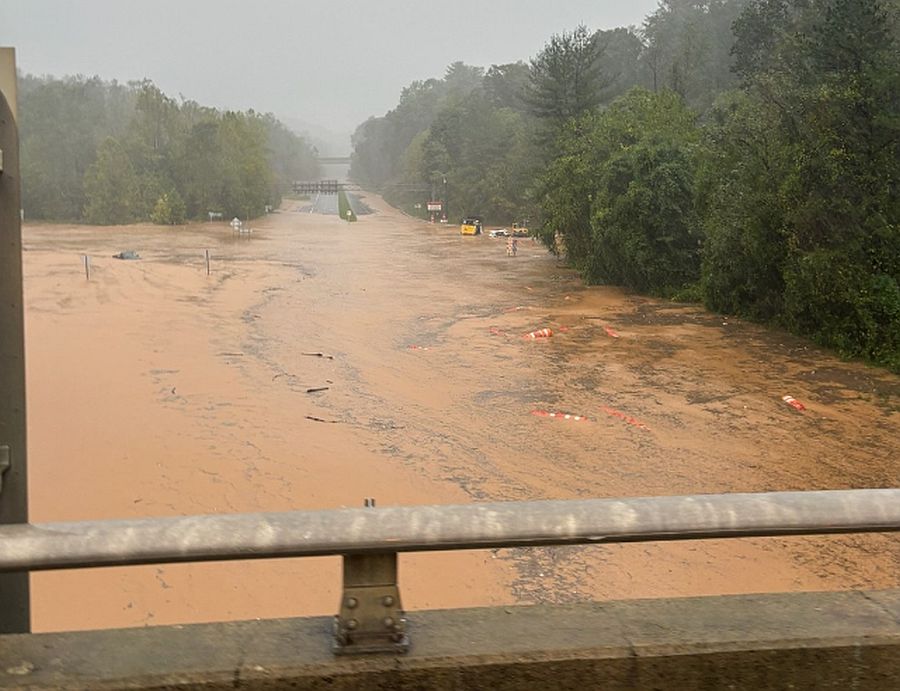Even as the water recedes there will be debris on the roadways. This NCDOT photo shared on Friday, September 27, 2024 shows US-74 submerged. (Photo: NCDOT)
State Sen. Natasha Marcus, the Democratic nominee for North Carolina Commissioner of Insurance, said Monday that the state must take “proactive steps” to improve infrastructure to better stand severe weather, update building codes and implement effective flood mitigation strategies.
Marcus’ remarks came days after Hurricane Helene dumped as many as 30 inches of rain on parts of western North Carolina. The historic drenching caused severe flooding and landslides and left many communities in ruins. The death toll stood at 35 in Buncombe County, six in Henderson County and one in Macon County at the time this story was written. Hurricane Helene is on course to become one of the nation’s costliest. AccuWeather Inc., estimates the total damage and economic loss from Helene may be as high as $160 billion across the Southeast.
“More storms like Helene are coming and every region of our state is at risk,” Marcus said. “By strengthening our homes and communities, we can reduce their devastating impacts and be better prepared.”
Marcus is challenging Republican incumbent Mike Causey for insurance commissioner. Causey and Marcus are scheduled to participate in a candidates’ forum Tuesday at 6:30 p.m., at Caffe Luna in Raleigh.
Causey released a letter on Monday urging storm victims to check on friends, family members and neighbors.
“If your community buildings, churches and other buildings are unscathed, please consider opening it up to allow first responders, emergency personnel, or the community to use as a base of operations,” Causey said.
The commissioner said the Department of Insurance is coordinating with law enforcement agencies, emergency management, fire departments, rescue squads, charities, churches and civic groups tto assist storm victims.
Republican Insurance Commissioner Mike Causey
“DOI will be coordinating on ways to reach those on the ground with insurance claims and other needs in the coming days and weeks,” Causey said.
For assistance with insurance matters, Causey urged storm victims to contact the N.C. Department of Insurance’s Consumer Services Division at 1-855-408-1212.
Meanwhile, Marcus noted that flood insurance is not included in standard homeowners’ insurance policies.
“This means that many of the million-plus people living in the declared disaster area likely do not have coverage for the damage they’ve suffered,” she said. “Most flood policies are provided through the National Flood Insurance Program (NFIP) and according to the most recent available data, there are less than 6,000 NFIP policies in the NC disaster area.”
The state, Marcus said, must begin to address systemic challenges that leaves its citizens vulnerable to such storms.
“Buncombe County, for instance, has relied on outdated flood maps from 2010, leaving many homeowners in the dark, not knowing they are in a floodplain,” Marcus said. “Accurate and up-to-date flood mapping is crucial for risk assessment and emergency planning. Unfortunately, efforts to modernize these maps have been stalled by political gridlock, leaving communities unprepared for the realities of our changing climate.”
North Carolina anticipates the release of updated preliminary maps for Buncombe County by the end of 2025, Marcus said.

